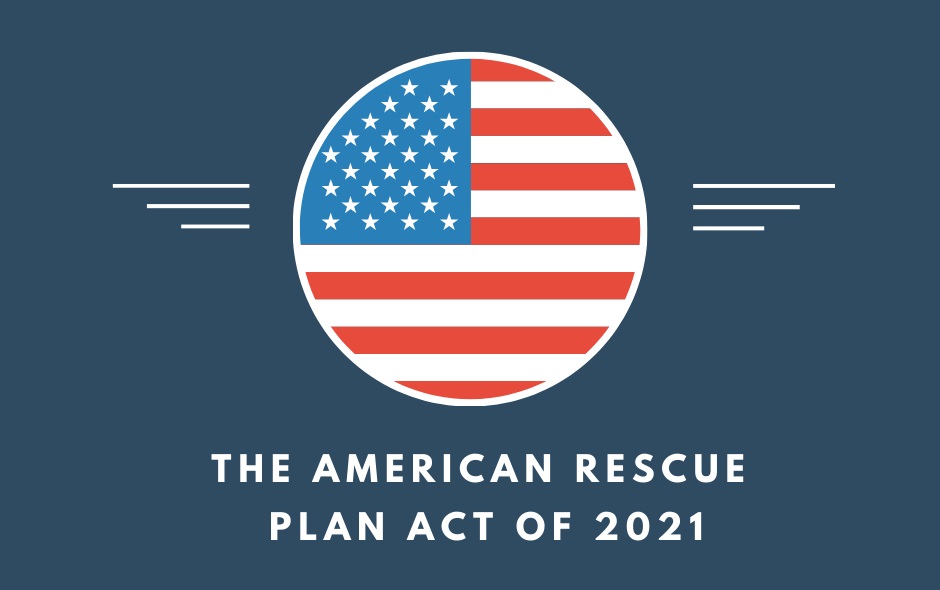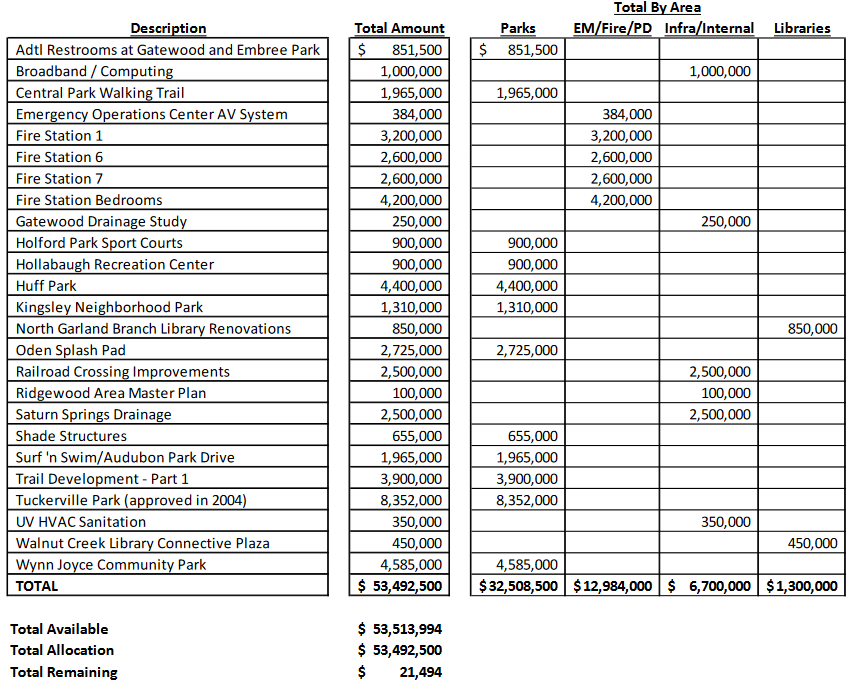
ARPA is the American Rescue Plan Act of 2021, which was signed into law in March of 2021 by President Biden.
One aspect of the law is funding for local governments for ‘lost revenue’. This is calculated by a series of formulas that show what the city ‘would have collected’ in lost revenue had COVID not happened.
The short version of this is that the City of Garland is scheduled to receive $53.5 million in additional funding over the next three years. As with any federal program, there are a myriad of rules, regulations and strings attached.
- My first thought was to use the money to lower property taxes. Congress said we couldn’t do that.
- My next thought was to use it to pay down the debt service. Also forbidden.
- Okay then, could we use it to speed up our progress in fully funding our ‘OPEB’ (other post-employment benefits) deficit? Nope.
- What about spending it on things that would help deal with COVID itself? (PPE Strategic reserve, setting money aside for off-setting additional insurance costs, etc). That was funded and covered by CARES act funding from 2020.
So what could we actually use the money for?
It came down to capital projects. But another set of restrictions said that we had to have the money allocated by 2024 and spent by 2026. With construction material shortages, and skyrocketing costs, we had to sort through what we could possibly design, bid, and construct in that short amount of time with today’s wildly inflated construction costs.
During a Saturday meeting on October 9th, I presented a comprehensive plan that was accepted by the council. While my name was on the plan itself, I want to stress that each council member has been engaged and voiced their district needs over their terms of office. It was very much a group effort. This plan was designed based on listening to each other over the years, reviewing old bond projects, dusting off dropped initiatives, looking at funding appropriateness, and taking advantage of timing for those projects already in flight that needed scope expansion.
We used the following criteria:
- Followed all Federal rules
- Had the potential to serve all of Garland’s residents
- Quick and easy to design
- Could be built in the time frame provided
- Could be scaled back in response to increasing costs if necessary
- Served all areas of the city geographically.
Tonight we approved the following package:
You’ll notice that there is a heavy parks/trails component to this plan. That speaks to us being able to deploy trails and outdoor spaces quickly, with minimal cost overrun.
On our fire station projects, we’re working to ensure that our stations incorporate all best practices for prevention of duty-related cancers and respiratory ailments. We’re adding UV lighting to the HVAC systems of our remaining public buildings as a disease prevention method. We’re gutting and rebuilding the technology inside of our Emergency Operations Center which has fallen behind significantly. We’re also using the opportunity to improve mobility in a few key areas and fix an additional 10 – 12 railroad crossings. Huff park, which was closed in 2002 in the wake of the dot com bubble burst is being largely rebuilt, and the Ridgewood area is being redesigned after losing the library branch in the last recession. Finally we’re making meaningful progress at Tuckerville Park, which was a 2004 bond package project.
There is an enormous amount of work to be done in the city. With this plan, we’ve attempted to use the funding to make meaningful capital improvements that fit all of the federal rules, serve the citizens, and in many cases improve/fix items that have already been approved by the voters in the past. And while I would rather have used this funding to provide direct tax relief to all of the citizens of Garland (and I have some long-winded rants about trillions in deficit spending by the federal government), we have been handed a “use it or lose it” check by the federal government. I hope that this plan is worthy of the city and its citizens.
-RJS
